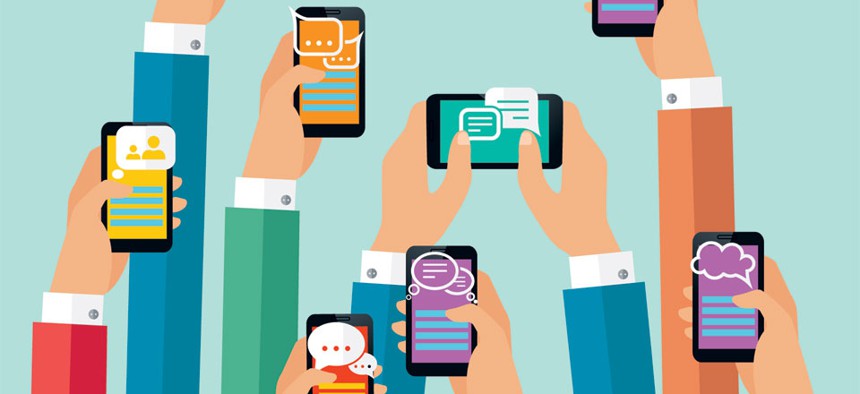FCC Wants to Upgrade Your Phone to 5G

Macrovector/Shutterstock.com
The agency is looking into the next generation of wireless technology, which could make phones a thousand times faster.
Phone companies like to brag about offering blazing fast "4G" technology. But the U.S. government is already starting to explore the next generation of wireless technology: "5G."
The Federal Communications Commission voted unanimously Friday to begin seeking public input on opening up new airwaves that could, one day, allow smartphone users to download high-quality videos a thousand times faster than what's possible on most connections today.
"We are moving from networks designed for analog voice to networks designed for high-speed digital data," FCC Commissioner Jessica Rosenworcel explained. "So how do we meet these demands? We look up. Way, way, up. To infinity and beyond."
The agency is eyeing whether to allow cell-phone carriers to use frequencies higher than 24 gigahertz. Up till now, those millimeter airwaves have been considered incapable of handling cell-phone signals. The frequencies can't carry signals very far and are easily blocked by obstacles.
But companies are working on new technologies that could overcome those problems. If it's possible to use the airwaves to power mobile devices, they could handle massive amounts of data that would be impossible on the airwaves in use today. The frequencies may allow for connections as fast as 10 gigabits per second, according to the FCC.
The frequencies could help consumers stream high-definition videos on their devices with minimal buffering or download large apps instantly. There may be potential uses of 5G technology that are unimaginable today.
There's no official definition of 5G, or the 5th Generation, of mobile technology (or any prior generation). But many engineers and policy officials are already using 5G to describe these new airwaves because of how they could revolutionize the smartphone industry.
Steve Crowley, a wireless-engineering consultant, explained that the 5G frequencies won't totally replace today's technologies. Lower frequencies will still be better at carrying signals over long distances, which is especially important in rural areas.
"It's a supplement, not a replacement for what we have now," he said.
But the cell-phone carriers could use the new frequencies to provide ultra-fast service in select areas. Consumers may decide to wait to connect to a 5G signal before downloading a massive file, Crowley explained.
The frequencies could also help to connect an array of new devices to the Internet. Companies are exploring ways to make Internet-enabled cars, medical equipment, security systems, refrigerators, and other appliances. The 5G frequencies would be better able to power all those new devices, according to Crowley.
But don't start counting on an ultra-fast smartphone connection just yet.
The FCC's vote is just the first step in a long regulatory process to begin allowing use of the new frequencies. And there are still many technological problems that need to be overcome.
According to Crowley, the 5G frequencies may be in use by 2020.
(Image via Macrovector/Shutterstock.com)



